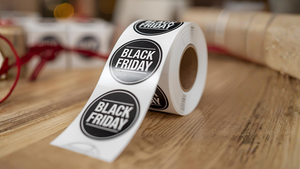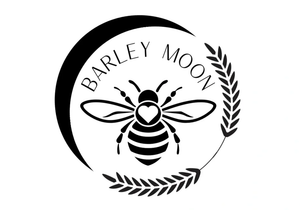Most Common Cannabis Labeling Questions: A Complete Guide

Cannabis labels can be complicated. Between complying with both state and federal regulations and creating a design that attracts attention, many companies struggle to know where to even start designing their cannabis labels.
If you’re feeling confused or overwhelmed, it’s okay. You’re not alone. Take a deep breath, get ready to take some notes, and use this guide to find the answers to the most common cannabis labeling questions – and how you can design both compliant and creative labels for your cannabis and cannabis-derived products.
Why Are Cannabis Labels Important?
Good labels motivate potential customers to pick up your product and take a closer look – but great labels get those customers to put your product in their cart. This is why creating and designing a successful label is such a big part of product marketing.
However, for the cannabis business owner, the challenge of creating a successful label is perhaps a bit more complicated than it is for brands in other industries. Cannabis labels are important for three big reasons:
Legal Compliance
The cannabis industry is heavily regulated, at both the federal and state levels. Legal compliance with all requirements is a must if you want your products to stay on the shelves. As a few cannabis product companies have already learned, it’s difficult to recover financially, legally or in terms of the trust for your brand once you’ve had products pulled from stores.
Branding

Faced with the sheer amount of information you’re legally required to provide, it can be easy to fixate on compliance, and forget about creating a creative label around that information. But as The Garden Society shows above, creativity and brand building are still possible. Note how the graphics and colors tie each product to the brand and create a cohesive vibe.
Trust in your brand is essential to the success of your cannabis business. So it’s important to balance legal compliance with brand building and product marketing. While you’re creating a design that incorporates all of the legal information, a label must pull its weight as a part of your marketing efforts as well. Your label creates a vibe that customers will associate with your brand and products. Don’t forget that.
Informing your customers
Many people are still very new to the cannabis industry, and cannabis-derived products. Don’t assume that your customers know what terpenes are, or the difference between CBD and CBDA. So while it can feel like drudgery learning about state and federal label requirements, remember that this is also an opportunity to provide your customers with information they may not otherwise have.
What Are Cannabis Product Label Requirements?
Below we’ll look at the different general requirements for cannabis product labels. This is the information that all cannabis product companies must include on their labels, no matter where in the country they sell their products. It’s important to note that each state has different additional requirements. Cannabis business owners need to check their state regulations before finalizing their label design.
Make sure to check your state-specific requirements for a full breakdown of your state’s cannabis labeling and packaging guidelines. Remember to look for additional resources on state government websites to make sure the information you have is the most up to date.
Please note: the types of products you sell will further dictate the labeling requirements with which you need to comply. For example, if your products are cosmetic, like a balm or lotion, consult the FDA’s cosmetic product label guidelines. For edible products like tinctures or gummies, you’ll need to use the FDA’s food product label guidelines.
Ingredients
While you don’t have to give away any proprietary recipes, full transparency of the ingredients in your product are required. This goes beyond the cannabis-derived ingredients such as THC and CBD. Every ingredient in your product needs to be listed on a distinct information panel on your cannabis product label.
Of course because you’re selling a cannabis product, you will need to break down the profile of terpenes in your products, and list all active cannabis ingredients. These include THC (delta-9-tetrahydrocannabinol), THCA (tetrahydrocannabinolic acid), CBD (cannabidiol), and CBDA (cannabidiolic acid).
Warnings
You’ll need to note if there are any possible allergen risks associated with your product’s ingredients. This also includes if it was packaged in a facility that processes other products that may contain allergens.
Further warnings are required for any associated health concerns such as possible impaired abilities while using the product, any risk of habit forming that could develop from using the product, and if the product is a Schedule I controlled substance. Any age restrictions, especially if the product is not safe for children, should also be noted.
Retailer and/or Manufacturer Information
Full transparency of where the product comes from and who makes it is also required. Name and contact information for both the seller and the manufacturer (if they’re two different companies) must be somewhere on your cannabis product label.
Your customers need to be able to contact you should they have any questions, concerns, or complaints about your product. Full accountability for your product, its packaging, and even customer service means making it easy for your customers to contact you.
Child- and Tamper-Proof Packaging
Product packaging security measures are essential for cannabis products. Creating tamper-proof bottles, jars, and boxes creates a sense of security for your customers by showing them your product is safe and has not been opened or tampered with.
Child-proof packaging is also important, as many cannabis products – like gummies – can look like regular candies that kids will enjoy. It’s important to put as many safety measures in place as you can to prevent them gaining access to products that may not be safe for them.
Product packaging safety regulations might vary from state to state, so be sure to check in with your state government’s labeling requirements. Generally speaking, most cannabis products need to be resealable, in opaque packaging. Child-proofing your product is also a fairly universal requirement.
Logo and Statement of Identity

Including your logo on your cannabis labels is probably something you already intended to do, right? Branding is essential to your success as a cannabis business owner, and a logo is a great way to build brand recognition. But your logo is also a labeling requirement, along with the name and contact information for your company.
A statement of identity simply means identifying what your product actually is. You need to state what the product is and if it contains cannabis or a cannabis-derived ingredient. Your label should very clearly show that this is a cannabis product.
In the image above, Good Flower successfully incorporates both their name, which is also their logo, and a statement of identity (“Sativa”) without crowding the front of their label.
Net Contents and Weight

Net weight refers to what’s actually in your product’s packaging, i.e. the product itself. It doesn’t involve the weight of the packaging your product comes in. Net weight also needs to be displayed on the front panel of your label, and you must list the weight in both imperial and metric units. This means both ounces and grams, as you can see at the very bottom of the Georgetown Hemp label shown above.
Net content refers to how much active cannabis or cannabis-derived ingredients are in your product. This means listing the percentage of THC or how much CBD is in each serving of your product.
Supplement and Nutrition Facts

For any cannabis products that are meant to be consumed, you’ll need to include a supplement or nutrition facts section on your label. Placed to the right of your statement of identity, the information required in this section includes details like serving size and daily value percentage. As you can see above, a simple and standard panel can be added to the back of your label with relative ease.
Dates of Manufacturing and Expiration
Unlike other label requirements, you have a little more leeway with where you put the dates of manufacturing and expiration, as well as when you add them to your label. You can certainly include them in your label design, but you can also print them on your packaging at a later date. You can even hand write the date if that works for you. Just make sure the information is easy to find, and easy to read.
Further Information to Provide on Cannabis Product Labels
Beyond the general requirements we listed above, what else is required to include on cannabis product labels?
While states will each have their own specific regulations with which you’ll need to comply, below are a few of the most common state-level information requirements for cannabis product labels.
Batch Number
Batch numbers on cannabis products are quick ways to reference specific batches of your product. Like including a manufacturing date, adding a batch number makes it easy for anyone contacting you about your products to be as specific as possible. And this means if there is ever an issue with your product, you can narrow down your search for what went wrong, where and when, by noting which batch numbers of your product are involved in the issue.
Cannabis Product Symbol
Many states require that cannabis product labels include a cannabis product symbol. These symbols, their sizes, colors and where on the label or packaging they should appear vary by state. However, the example below gives you an idea of what they generally look like. Some symbols are a simple marijuana leaf, while others include “THC,” “CBD,” or other quick references to what the product they label contains.
Check with your state’s requirements about its cannabis product symbol regulations while designing your label. Take a look at how the Kiva Confections label included California’s required cannabis product symbol at the bottom right corner.

Fonts and Text Size Requirements

While not every state has requirements surrounding specific fonts, they do probably have a list of their most preferred fonts. These will be the ones they’ve determined are the easiest to read for most customers. Text size regulations generally apply to specific information panels, such as your ingredients panel and supplement and nutrition facts.
The FDA also sometimes has specific requirements, especially about text size, so you’ll need to check both state and federal regulations before you finalize your label design. The Rosette tincture bottle above is a good example of a good use of strong, clean fonts at easy-to-read sizes.
Panel Location Requirements
Different types of information belong in different places on your label. For example, the net weight and content must be on the front of your primary label, and on the lower portion of that label. Your statement of identity must also go on your primary label, and so must your ingredients and nutritional information panel.
Other required elements afford you a little more wiggle room about where you can include them on your product label and packaging. The elements you can play with depend both on the federal regulations you’ll need to follow – food or cosmetic – as well as the regulations of the state in which you sell your products.
Where to Design Compliant Cannabis Labels?
Based on your state’s requirements, there could be several other elements you will need to include on your cannabis labels to be fully compliant. Which means creating and designing your label is going to take quite a bit of work.
And from a marketing perspective, that isn’t such a bad thing. The more you have to get creative with your cannabis labels, the more time, thought, and energy you’ll put into your designs. And that saves you from creating bland, boring labels.
You know what else saves you from bland and boring? Working with a printing company that understands your label design needs. And Stomp gets it: You have a lot of legal hoops to jump through in order to design stand-out labels that are also legally compliant. Cannabis business owners need to fit a lot of information onto their labels and packages. But once you know what you need to work into your design, we’ve got your back with the experience and expertise to print an attention-grabbing and informative label.
Stomp has your cannabis business marketing covered with labels in a wide variety of shapes and sizes. You create the compliant label, and we help you proof and print with ease. Contact us and stand out today.
- Marketing Team


































